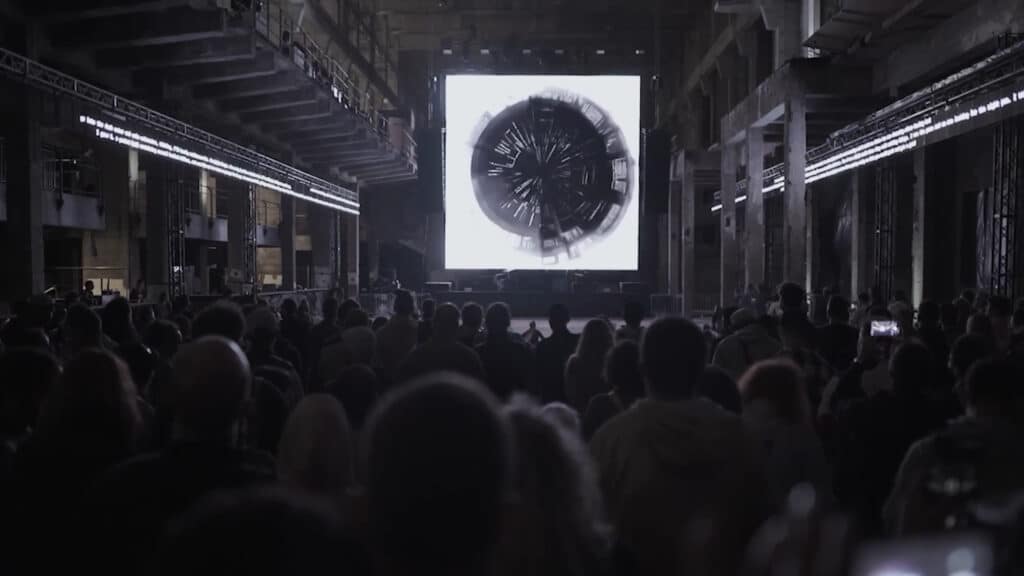Visual artists, fashion designers, and digital creators come together in an unprecedented exhibition that explores the creative boundaries of artificial intelligence.
Paris, the historical capital of art and cultural innovation, will host from June 10 to 12 a proposal that combines cutting-edge technology with artistic sensitivity: the AI Art Gallery of NVIDIA GTC Paris. The exhibition, located in Pavilion 7.1 of the Paris Expo Porte de Versailles, brings together works from international artists who are redefining what it means to create in the age of artificial intelligence.
The showcase includes everything from oil paintings generated from dreams to digitally recreated extinct flowers, as well as fashion campaigns featuring tubers on the runway. All of this is powered by NVIDIA’s computational capabilities as a creative and reflective engine.

An AI That Learns to Dream
One of the standout artists is aurèce vettier (the artistic name of Paul Mouginot), who has been experimenting with AI as a poetic tool since 2019. His works, such as the series “le travail des rêves”, are generated using models trained on personal photographs, which he then transforms into oil paintings. “When you train an AI with your own memories, it stops being just a tool: it becomes a poetic mirror,” the artist asserts.
With NVIDIA as technological support, vettier explores “over-nature” and “over-reality” in canvases that aim to convey intimacy, mythology, and human emotion.
Archive of a Forgotten Nature
From Senegal, Linda Dounia Rebeiz presents “Once Upon a Garden”, a speculative archive of Sahel flowers that have disappeared due to climate change. The artist highlights how the Global South is underrepresented in the data that feeds AI. Her project, which has reached five iterations, serves as both an ecological protest and an act of memory.
“The way we remember the world is unequal,” Rebeiz asserts, using AI not only as a creative tool but also as an instrument of cultural preservation.
Digital DNA, Neuronal Dreams, and Vegetable Fashion
Other notable projects include Entangled Others Studio, a duo that combines art, ecology, and synthetic biology. Their work “Self-Contained” transforms complex data into poetic visuals, even stored in DNA capsules. “Our digital spaces mutate like cells: they copy, mix, and forget,” say the founders.
From Italy, the studio fuse* works with over 28,000 dream narratives for their work “Onirica ()”, generated with text-to-image diffusion models trained on dream data from the psychophysiology lab at the University of Bologna.
With a humorous and critical angle, the Dutch artist Jeroen van der Most presents “Vegetable Vendetta”, where potatoes walk the runway like haute couture models. “Thanks to AI, we can now make vegetable ads with Prada quality,” the artist jokes, using technology to reflect our desires and advertising clichés.
AI on the Runway Too
The event also serves as a showcase for the future of fashion. The Institut Français de la Mode and the Fashion Innovation Agency from the London College of Fashion present installations that demonstrate how AI allows for the creation of concepts, campaigns, and collections without sewing a single garment.
“AI does not replace the designer; it challenges them,” says Giovanna Casamiro, a professor at IFM. For Matthew Drinkwater from London, this technology marks “a cultural and technological turning point.”
A Gallery That Opens the Debate
More than an exhibition, the AI Art Gallery at GTC Paris is a statement of intent. A demonstration of how artificial intelligence can collaborate with human creativity, not as a substitute, but as a unpredictable and inspiring companion. The exhibition invites visitors to question the role of the author, memory, aesthetics, and sustainability in an increasingly algorithmically mediated world.
Those unable to attend in person can visit the virtual gallery on NVIDIA’s website. And for those in Paris, the meeting point is clear: between networking and VIP lounges, on the lower level of Pavilion 7.1, lies a window to the art of tomorrow.
via Nvidia Blogs

